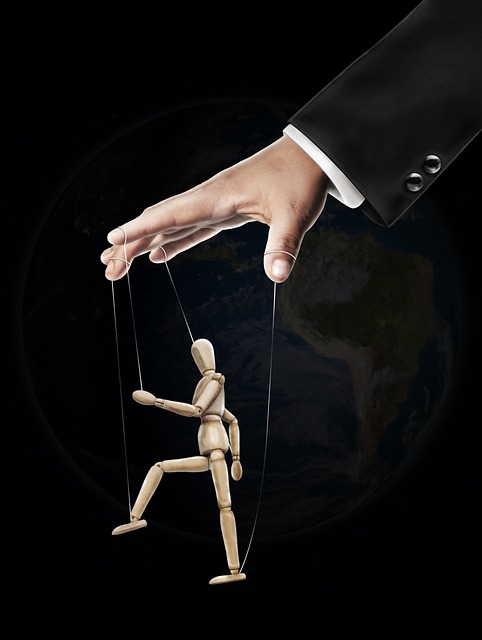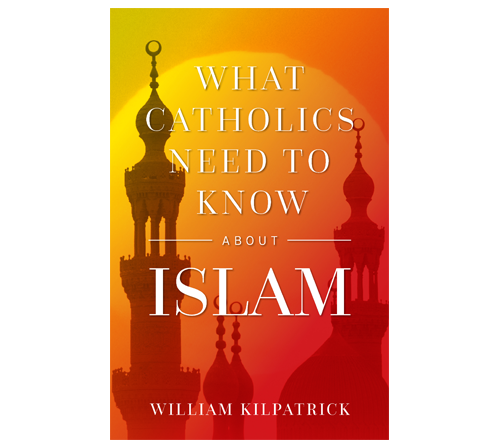In Part I, I described how Islamic jihadists hijacked four jetliners by means of violent jihad, and how stealth jihadists later managed to hijack American universities.
But the really big hijack operation has been the hijacking of 9/11 itself. More precisely, in the years after 9/11, stealth jihadists managed to co-opt the narrative we used to explain what happened on September 11, 2001. We were told how to think about 9/11 — and because we knew so little about Islam, we accepted it.
‘Islam’ Actually Doesn’t Mean ‘Peace’
Initially, it looked as though a well-trained and well-funded group of Saudi terrorists had attacked America for both political and religious reasons. Certainly that was the impression one got from Osama Bin Laden, the leader of the terrorists. He claimed that the Quran justified their actions, which were punishment for the U.S. stationing American troops on the holy ground of Saudi Arabia.
But the possibility that the attack was religiously motivated was quickly supplanted by another narrative. The stealth jihadists were already in place long before 9/11, tunneling into influential positions and shaping narratives that would absolve Islam of blame for any violent actions their more overt brethren might take.
Shortly after the attacks, while most Americans were trying to figure out what had just hit them, President George W. Bush solemnly (and erroneously) assured the nation that “Islam” means “peace.” How did he know? He had been assured of this by leaders of Muslim Brotherhood-affiliated organizations who managed to meet with him on several occasions.
In the following months, Bush expanded on the Islam-is-peace theme whenever he got the chance — at Eid al-Fitr celebrations, Iftar dinners, and addresses before Congress. At one such session he affirmed that “the terrorists are traitors to their own faith, trying, in effect to hijack Islam itself.”
That’s what the Muslim Brotherhood’s stealth jihadists wanted Bush to believe. In fact, they themselves were intent on hijacking Christian and American beliefs — or at least, the sentiments that go with them.
They would attempt to convince us that they shared our values and goals. This approach was highly successful because it took advantage of a major weakness in our society: a tendency to fall for any propaganda that uses the language of faith, freedom, religious tolerance, social justice, and civil rights. As President Bush said in an Eid al-Fitr presidential message, “We respect the vibrant faith of Islam, which inspires countless individuals to lead lives of honesty, integrity, and morality.”
Of course, hijacking American and Christian values wouldn’t work without the cooperation of Americans and Christians who naively assumed that all people yearn for democracy and that all faiths are just like ours.
How Can We Fool Thee? Let Us Count the Ways.
Dedicated jihadists and their allies, however, don’t believe in leaving things to chance or to the whims of useful idiots. So they took pains to ensure that their 9/11 narrative would be the only official one. In short, they made it mandatory.
Here are some examples:
- In 2008, Major Stephen Coughlin, the Pentagon’s top authority on sharia law, was fired for not softening his contention that Islamic law requires jihad.
- A few years later, the Department of Homeland Security banned the use of the word “jihadist” out of concern that it might offend Muslims.
- In 2008, Major Nidal Hasan was invited to share his ideas about security at a task force set up by the George Washington University Homeland Security Policy Institute. By that time, his pro-jihadist sympathies were already well known, but the Army took no action against him. After Hasan murdered 13 soldiers and wounded 32 others at the Fort Hood Army base in El Paso, Texas, in November 2009, the Army blamed it on PTSD although Hasan had never been in combat. Hasan insisted he was obeying the law of Allah.
- In October 2011, in compliance with Muslim requests, the deputy US attorney general ordered the FBI and other national security organizations to eliminate from their training materials any references to Islam that suggest it has a tendency to be violent.
Both the security establishment and the military purged their training manuals of just the kind of knowledge needed to understand and combat Islamic terror.
War on Words
In addition, various government agencies adopted a strange new policy that prevented soldiers and security agents from even naming their enemy. In war, as Sun Tzu pointed out, it’s essential to know your enemy. But in the war against terror, all the most obvious terms were banned. Jihadist? Nope. Islamist? Uh-uh. Militant Islamist? Offensive. Radical Muslims? Don’t go there.
Finally, the feds managed to come up with a term that wouldn’t offend Muslims –or anyone else, for that matter. The best way to describe the enemy, they decided, was to call their actions “violent extremism.”
Instead of fighting a “war on terror” — a phrase which at least reminded us of the 9/11 attack — we were now committed to “countering violent extremism,” a strategy which seemed designed to take the heat off Islamic jihad. As one government fact sheet stated, “the term ‘Countering Violent Extremism’ refers to efforts focused on preventing all forms of ideologically based extremist violence…”
“All forms?” If you’re going to deploy your resources to combat all forms of extremist violence, you will have to spread them very thin. As a consequence, Islamic terrorism will not get the attention it deserves.
What’s in a Name? A Lot.
Was that the goal? It seems so. Indeed, the fact sheet devotes almost as much space to street gangs and bullying as it does to ideologically motivated violent extremist groups.
Violent extremism? You might as well call it “harmful aggressiveness.” As we eventually found out, it makes more sense to fight entities rather than abstractions. Thus, when law enforcement agencies want to break up criminal organizations, they first need to identify them by name — for example, MS-13, Tren de Aragua, the Sinaloa Cartel, etc.
By contrast, our government made every effort to obscure the identity of the 9/11 assailants who, they assured us, were only a “handful” of Muslims — an unrepresentative group of haters who had betrayed their own religion.
What was the hijackers’ motive? Our leaders didn’t want to know that, either. There was some early talk of a desire to fight and die for Allah. But most of our leaders couldn’t accept that. They looked upon religion as a good thing, and found it difficult to believe that God would order His followers to murder innocents.
This belief was reinforced by imams, religious scholars, and other Muslim leaders. Rather than do their own research, as Major Coughlin had done, our experts depended on the Muslim community to tell them what they needed to know about Islam. Apparently, however, no one had informed them that Islamic law requires Muslims to lie in order to spread their faith.
Coordinated Effort
Our experts also failed to realize that, in most big cities, the community leaders tended to be members of the Muslim Brotherhood, the very group that bamboozled Bush into believing that the word “Islam” means “peace.” It actually means “submission,” and by the time Bush misinformed the nation, countless police, Army officers, and FBI agents had already submitted to the whitewashed version of Islam the Brotherhood had provided.
By 9/11, the Muslim Brotherhood and its affiliates already controlled the narrative about Islam, and even in the face of the destruction, most of our leaders stuck to that script. And still do.
Since what I’ve written here flies in the face of the accepted narrative, many will dismiss it as wild speculation — a paranoid conspiracy theory without any basis in fact. But the fact is that the Muslim Brotherhood’s infiltration of our society is well-documented. It was the subject of a two-year trial that uncovered ties to terrorism and exposed a network of Muslim Brotherhood-affiliated groups across North America.
In 2008, a federal jury in Dallas, Texas, convicted a group called the Holy Land Foundation for providing $12 million to Hamas, the Palestinian wing of the Muslim Brotherhood and a designated terrorist organization.
Twenty-nine other organizations were named as unindicted co-conspirators, including the Muslim Student Association (MSA), the North American Islamic Trust (NAIT), the Islamic Association for Palestine (IAP), and the Council on American-Islamic Relations (CAIR).
Trail of Evidence
Among the many papers uncovered in the trial was a founding document containing a blueprint for a “grand jihad” strategy in North America aimed at “sabotaging” American institutions.
The fact that almost all of the above-named Islamic organizations still operate freely suggests that the grand jihad has thus far been successful, while our response to it might well be likened to a grand mal seizure — a total blackout of crucial information about Islam.
As mentioned earlier, just three years after the Holy Land Trial convictions, the Army, the FBI and other national security organizations were forced to purge their training programs of all material that cast Islam in a negative light. This greatly hindered our counter-terrorism efforts. But the purge may have come as a relief to some of the higher-ups in the security establishment. There is much to suggest that they never wanted to look too closely at Islamic ideology. Indeed, the FBI had partnered for years with CAIR, and only broke off the relationship after the revelations of the Holy Land Foundation trial were disclosed in 2008.
In short, it seems as though our security and intelligence experts had put the fox in charge of the henhouse.
But if it’s any consolation, America is not the only continent that’s been outfoxed. A similar infiltration of Europe is well underway and is, in fact, far more advanced than ours. The pace of jihad is accelerating in Europe and it’s being met, unfortunately, not with increased resistance but with appeasement and silence.
This article originally appeared in the June 5, 2025 edition of The Stream. The original subtitle has been changed to better reflect the content.
Picture credit: Pixabay


